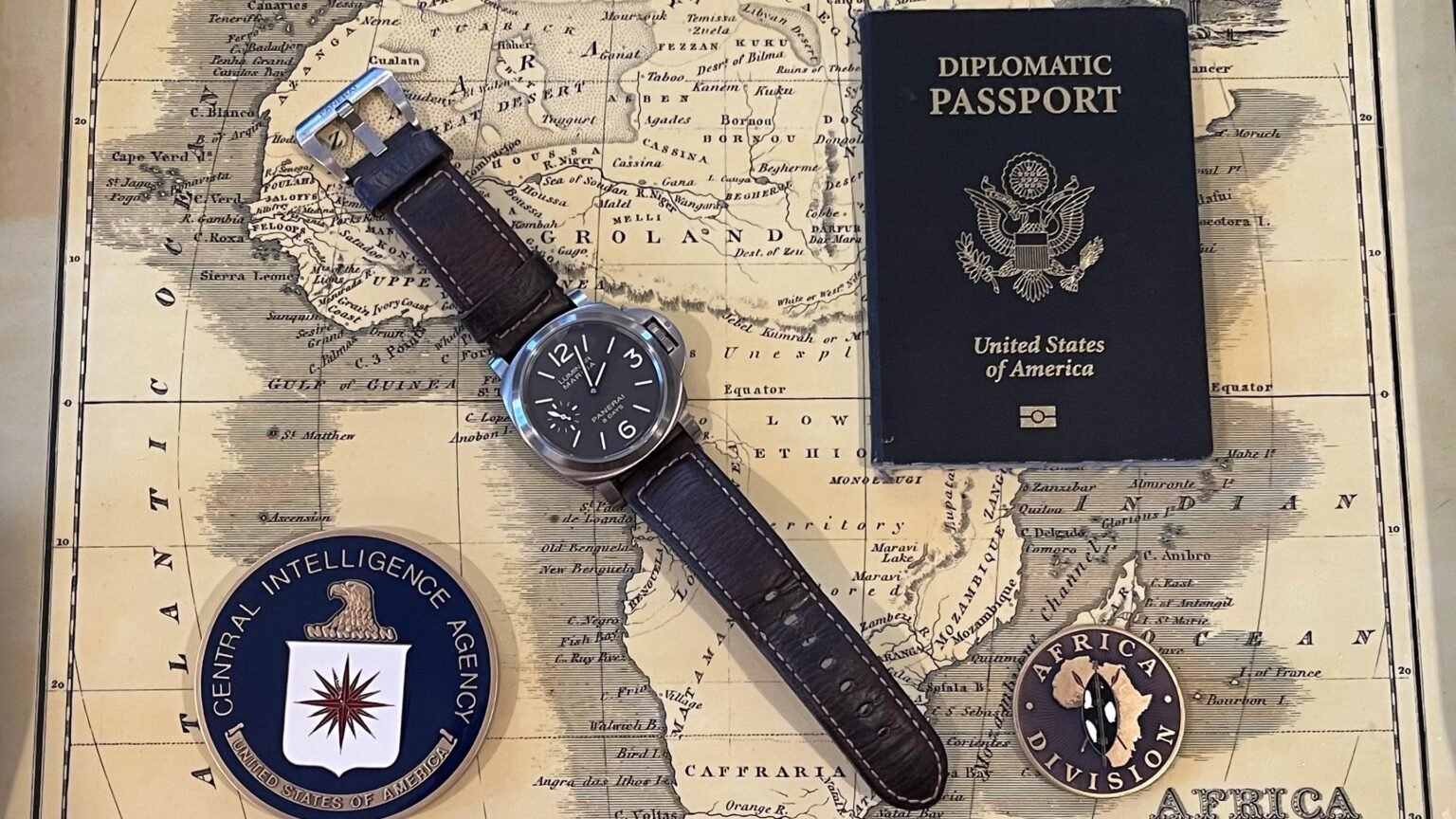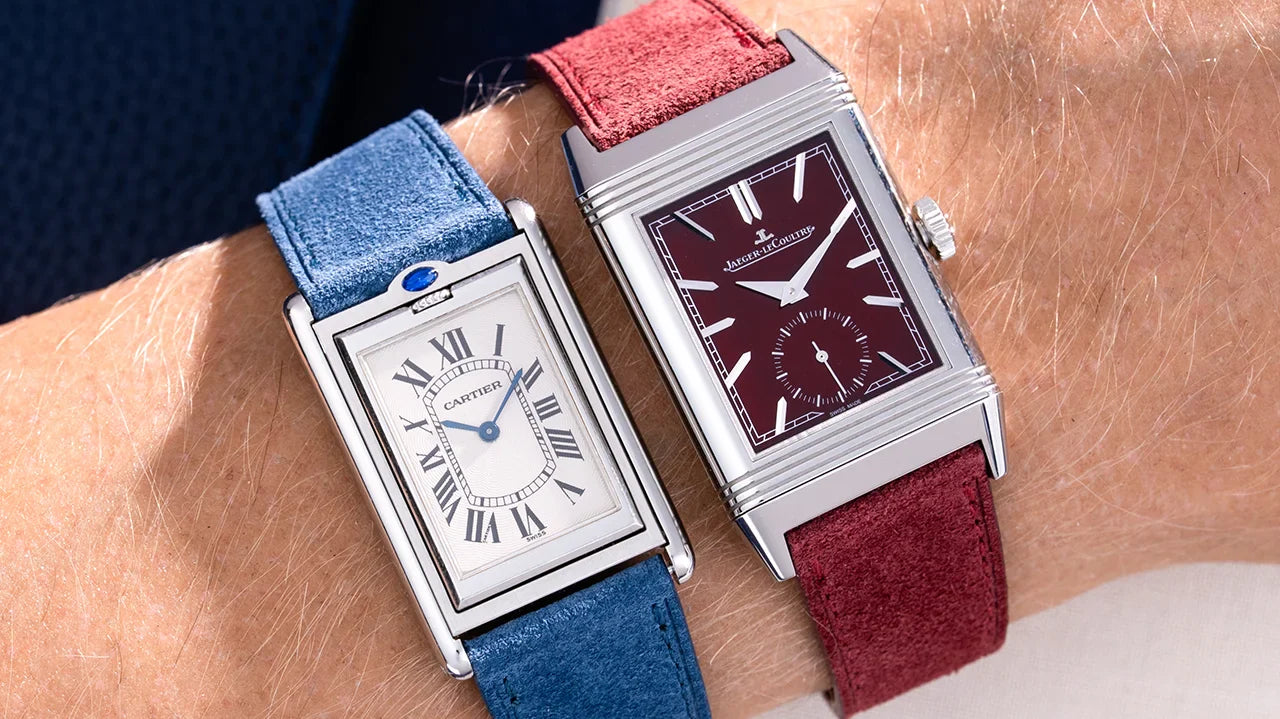In today's digitalized world, wristwatches have been rendered virtually redundant in people's daily lives, but in the mysterious world of global espionage, they remain central. Wristbuddys explains why.
The sun was sharp in my eyes, it was bright as a welding torch. I was embraced by a tropical dream. A light breeze against my body, the nurturing, unmistakable roar of the ocean, the soft sand against my feet. We sat in the usual plastic chairs next to a simple bar on the beach, a few colleagues and acquaintances, in a conflict zone in Africa. Opposite me was an "attaché" from the US embassy. Or more like a marine, judging by his body armor and confident manner. CIA. We discussed the head of security at the war crimes tribunal in Freetown, who was suspected of smuggling diamonds. "You're going home in a body bag" said my Norwegian colleague in sounding Norwegian-English, referring to the people I was hanging out with. But I survived.
The above story is true. It came to mind when I found an article in Hodinkee, the major US online watch magazine, about the importance of mechanical watches to US intelligence. It was written by a former CIA case officer, who remains anonymous.
It's funny, but that's what they're called, 'handlers', like any social worker, the operational spies who gather intelligence for the US in every corner of the world at the risk of their lives.
Incidentally, the Hodinkee article was approved by the CIA's Prepublication Classification Review Board to prevent the leakage of classified information. This is of course also encouraging.

Watches have been around for many hundreds of years, and when the 20th century was young, these mechanical little timekeepers had been given bracelets and started to frequent the wrists of more and more ordinary citizens around the world.
In the last decade or so, however, the importance of the wristwatch as a timekeeper has virtually disappeared. And this is of course due to the rapid spread of the mobile phone in the world's societies.
But in the world of intelligence (the author of the Hodinkee article mentions foreign intelligence gathering, covert operations and counter-intelligence), they are still highly relevant. Firstly, measuring time - and it can be a matter of seconds - is an absolute necessity for an operator in the field. It can be a matter of life and death.
But why can't you just do it on a mobile phone or a smartwatch, like ordinary people?

The uses of the mechanical wristwatch
In the James Bond films, the British super intelligence officer is frequently seen wearing expensive wristwatches. In the films up to 1989, with the entire line from Sean Connery to Timothy Dalton, it is mainly the Rolex Submariner, while the Omega Seamaster, as you know, took over the role of Bond's service watch with the arrival of Pierce Brosnan in 1995. You'll see it with metal bracelet on the picture, but today you can easily change the Rolex bracelet to a Rolex leather strap or a Rolex rubber strap for versatility.

However, this kind of exclusive diver's watch is a common sight on real-life spy wrists as well. Firstly, the use of the mechanical wristwatch for intelligence operators is so much broader than just measuring time. They are also tools with several other key functions.
Mechanical watches are used to build relationships, recruit agents by gift/bribes. They are used where traceable electronic devices cannot be used, as payment in emergencies, in analyzing the psychological profile of foreign leaders, and so on.


Recruitment
Mechanical wristwatches are central to the intelligence officer's own work, but are also used as a payment, or bribe, to recruit agents. As an 'operational gift'.
And a better branded watch is an ideal gift as it is instantly recognizable to most people - from shaggy rebel leaders in the darkest corners of Africa to polished diplomats in Geneva. It can be worn like a piece of jewelry, giving the agent status and attracting recruitment.
An extreme example is the gold Patek Philippe pocket watch that a young Dalai Lama received as a gift from US President Franklin D. Roosevelt in 1943, allegedly to make the little Dalai compliant for an American road construction through Tibet to assist the Chinese against the Japanese.
Watches can also be used to initiate a conversation with a foreign intelligence officer (depending on what they are wearing) in the hope of making contact and perhaps starting to build a relationship.

Untraceable instruments
Thus, in a world where electronic devices can be tracked, they pose a security risk to operators in the field. This means that mechanical wristwatches are being used for what they were originally designed for: measuring time.
A reliable watch can therefore be essential to carry out a mission without leaving digital traces, which can be exploited by foreign security services, putting the spy's life at risk and ultimately threatening national security.

Payment instruments in trouble
One reason to wear an exclusive watch during a mission is that it can serve as a valuable bargaining chip in a crisis situation. If you are in distress, the watch can act as a currency that can be exchanged for a hiding place in a basement, transportation to the border or whatever.
Furthermore, a Rolex is so much more convenient and secure to carry (i.e. wear on your arm) than gold or cash, which can be lost more easily.
Incidentally, watches were part of the "life barter kits" or "escape & evasion kits" that American fighter pilots carried in their planes during World War II and the Cold War, to be used as payment in an emergency after a crash over enemy territory.

“War zone watch”
When an American intelligence officer completes their mission, a mission that often involves great physical as well as mental strain and perhaps a milestone in life itself, it is common for them to reward themselves with a gift - often an exclusive watch. To remember and be reminded. A "war zone watch", pure and simple.
It could be an Omega Seamaster or Rolex GMT Master acquired during a stopover in Doha or Dubai. James Bond, as fictional as the character is, is said to have a surprisingly large influence on the choice of wristwatch in these contexts.
Breitling and Panerai are also popular with CIA operatives operating in Africa and the Middle East. Both sell reliable and durable watches that have a high exchange value due to their recognizability and status. Another popular watch is the tudor black bay 58.

The continuing importance of the mechanical watch
The mobile phone, which has been embedded in every corner of the world and eliminated the need for a wristwatch, has a weakness: it is much more difficult to read.
This is the same monkey that once afflicted the pocket watch, which gave rise to the wristwatch. It was born in the trenches of the First World War and in the cockpits of early airplanes, where it was discovered that it was extremely impractical - and therefore dangerous - to have to dig in your pockets for your watch.
It's so much quicker to just flick your wrist and get a time within a second. And thus survive. Today, of course, there are the smart wristwatches that further destroy the need for a mechanical watch.
So, the lost importance of the mechanical wristwatch as a timekeeper may be a fact for the average person, but for an intelligence operator in hostile territory, his (or her) survival tool can also be used to do just that - measure time, quickly, efficiently and invisibly. And still superior to a cell phone or a smart watch.
I wish I could transport myself back to that sunny Sunday afternoon on Lumley Beach in Freetown, to see what watch my table companion - the "attaché" from the US Embassy - was wearing that day. Obviously, it never occurred to me to watch-spit when it happened. No, I don't think I would have been much of an intelligence officer.



